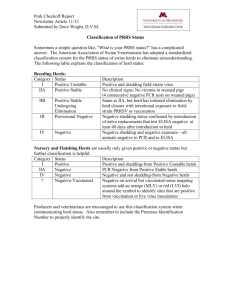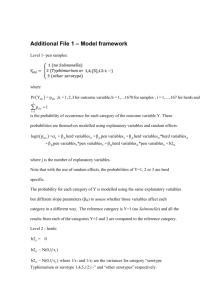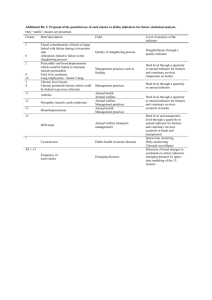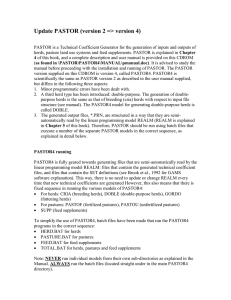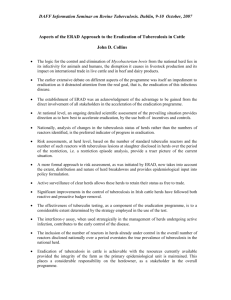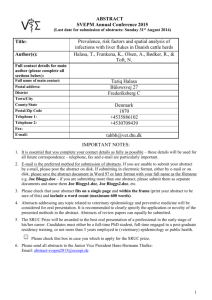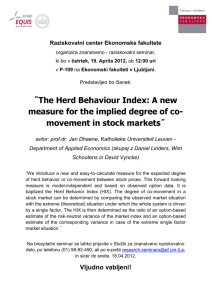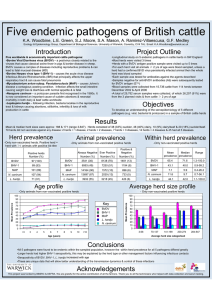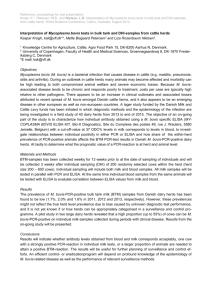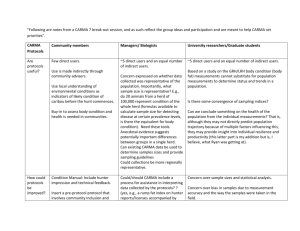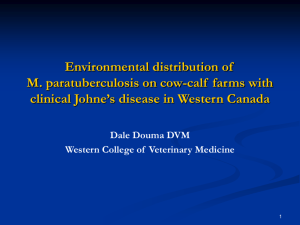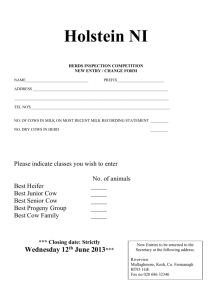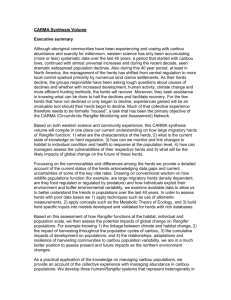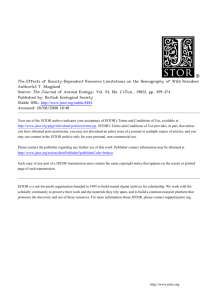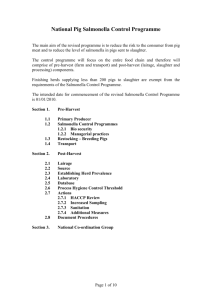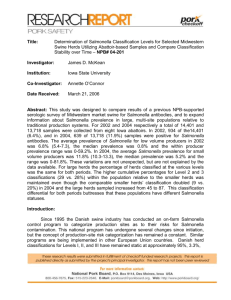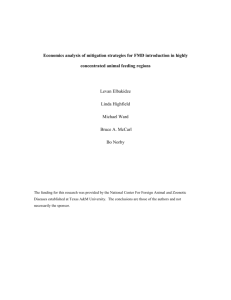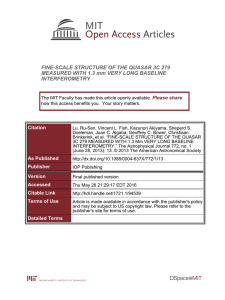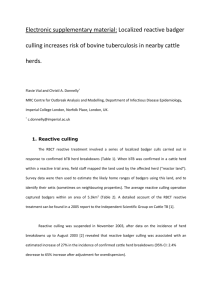Breakout
advertisement
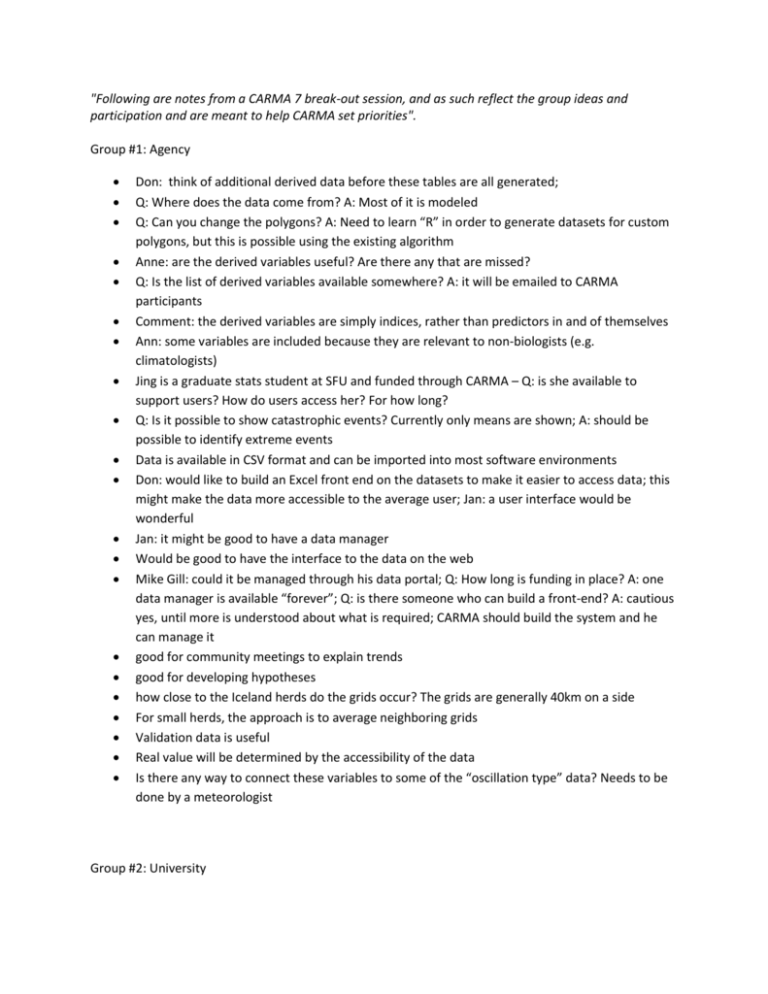
"Following are notes from a CARMA 7 break-out session, and as such reflect the group ideas and participation and are meant to help CARMA set priorities". Group #1: Agency Don: think of additional derived data before these tables are all generated; Q: Where does the data come from? A: Most of it is modeled Q: Can you change the polygons? A: Need to learn “R” in order to generate datasets for custom polygons, but this is possible using the existing algorithm Anne: are the derived variables useful? Are there any that are missed? Q: Is the list of derived variables available somewhere? A: it will be emailed to CARMA participants Comment: the derived variables are simply indices, rather than predictors in and of themselves Ann: some variables are included because they are relevant to non-biologists (e.g. climatologists) Jing is a graduate stats student at SFU and funded through CARMA – Q: is she available to support users? How do users access her? For how long? Q: Is it possible to show catastrophic events? Currently only means are shown; A: should be possible to identify extreme events Data is available in CSV format and can be imported into most software environments Don: would like to build an Excel front end on the datasets to make it easier to access data; this might make the data more accessible to the average user; Jan: a user interface would be wonderful Jan: it might be good to have a data manager Would be good to have the interface to the data on the web Mike Gill: could it be managed through his data portal; Q: How long is funding in place? A: one data manager is available “forever”; Q: is there someone who can build a front-end? A: cautious yes, until more is understood about what is required; CARMA should build the system and he can manage it good for community meetings to explain trends good for developing hypotheses how close to the Iceland herds do the grids occur? The grids are generally 40km on a side For small herds, the approach is to average neighboring grids Validation data is useful Real value will be determined by the accessibility of the data Is there any way to connect these variables to some of the “oscillation type” data? Needs to be done by a meteorologist Group #2: University What kind of assessment has been done to see how good the data is? A: most data is modeled, so it’s the best data available; biggest advantage is that data has been corrected for sensor differences; Only suitable for modelling? GPS coordinate is the link between an individual animal location and the data; you can also use the seasonal range to tie to the location of the herd to the appropriate climate records Brad: data is associated with a polygon at present; to follow an individual animal it would be much more complicated Jillian: what do we mean by “temperature?” A: 10m, 2m, surface. How accurate is the data for predicting a freeze-thaw cycle? A: the variable right now is a snow indicator, not ice Monte: data is useful for graduate students; for the public it is important to provide some explanation for why the data is important, and to explain the relevance with respect to the herd Jillian: current variables do not seem relevant for her work on parasites; grids are large relative to the herds she is studying Ryan: tremendous opportunity, however need to use the data with caution; interested to see what kind of error there are in the modeled data. Julie: great database; not clear how to use the system; unfamiliar with GIS concepts Fellow from Scandinavia: useful; make it available in a simple format (e.g. snow depth over 30 years); good to have it easily available; great to avoid wading through huge datasets Archana: extremely useful; she spent several months working up climate data herself Grad student from Alaska: nice to explain why some years are different from others Genetics Phd student: seem like the usefulness depends on what corresponding data you have for your animals; Don: most variables have variation data (e.g. SD) Carol: what time span? 1979-2009 Ann: spatial portal makes lots of sense (web GIS) Russians: very interesting data for Russia, as number of weather stations quite limited; interesting to compare this data to actual weather station data; data needs to be validated so Taimyr data could be used to validate with weather stations; also would be good to have web GIS Steeve Cote: 1. Validation is important, especially with snow measurements; satellite data doesn’t seem to work well for snow data; 2. Risk of stat fishing expedition; 3. We can look at common drivers across herds; 4. What about modelling data out into future (e.g. GCM data) Peter: 1. If used for publication, the methods are documented and credited; 2. 40km grid size large – would a smaller grid size be possible Monte: great interest by a non-scientific audience, but open to abuse. Need to explain why it is important and how certain you are about conclusions. Archana: challenge in validating is finding data that was not used in generating the original dataset; NASA website has a blog about validation Colin: how can we create a climate dataset for an individual animal as it moves across the landscape (for modelling purposes)? Group #3: Community People would like to know for people in communities to know snow conditions Data is delayed by 2 months Could communities be told in advance of conditions for the upcoming hunt? Probably not realistic to expect less than a 6 month delay in data Is it possible to identify areas prone to flash floods? A: tough with only this data Brad: data might be useful to indicate fire risk in an area Could comanagement boards could use the data to predict fire risk and lobby for protection of caribou habitat Brad: questions like: which herds are most vulnerable to fire? And use this to direct efforts to protection Leslie: interested in predicting risks for herd; communities are interested in what happened to animals on the winter range Simple interface would be important Dave: are these derived variables generated from models? How are derived variables going to be validated? A: indices are more of a potential Gary: information would allow co-managements to be less reactive, and be more proactive. Karen: do these data lend themselves to doing correlation between climate and biology of caribou Karen: any way to look at connection between climate and forage quantity and quality? A: greenness index didn’t work out; Brad has been working with NDVI, which would be made available eventually Karen: advice on the kinds of relationships we could be looking for in the data Dave: extreme events (e.g. icing events) would be useful to know – helps corroborate hunter experience; also helps tell communities how extensive the event was (ie did it occur beyond the community) Layer this spatial information on past records of changes in herd, we might be able to understand how and why herds declined – this would be beneficial to boards; important to tie this information to biology of herd Don: boards could reconstruct Technical Committee for the PCH brings together all relevant information – this kind of data would be included.
